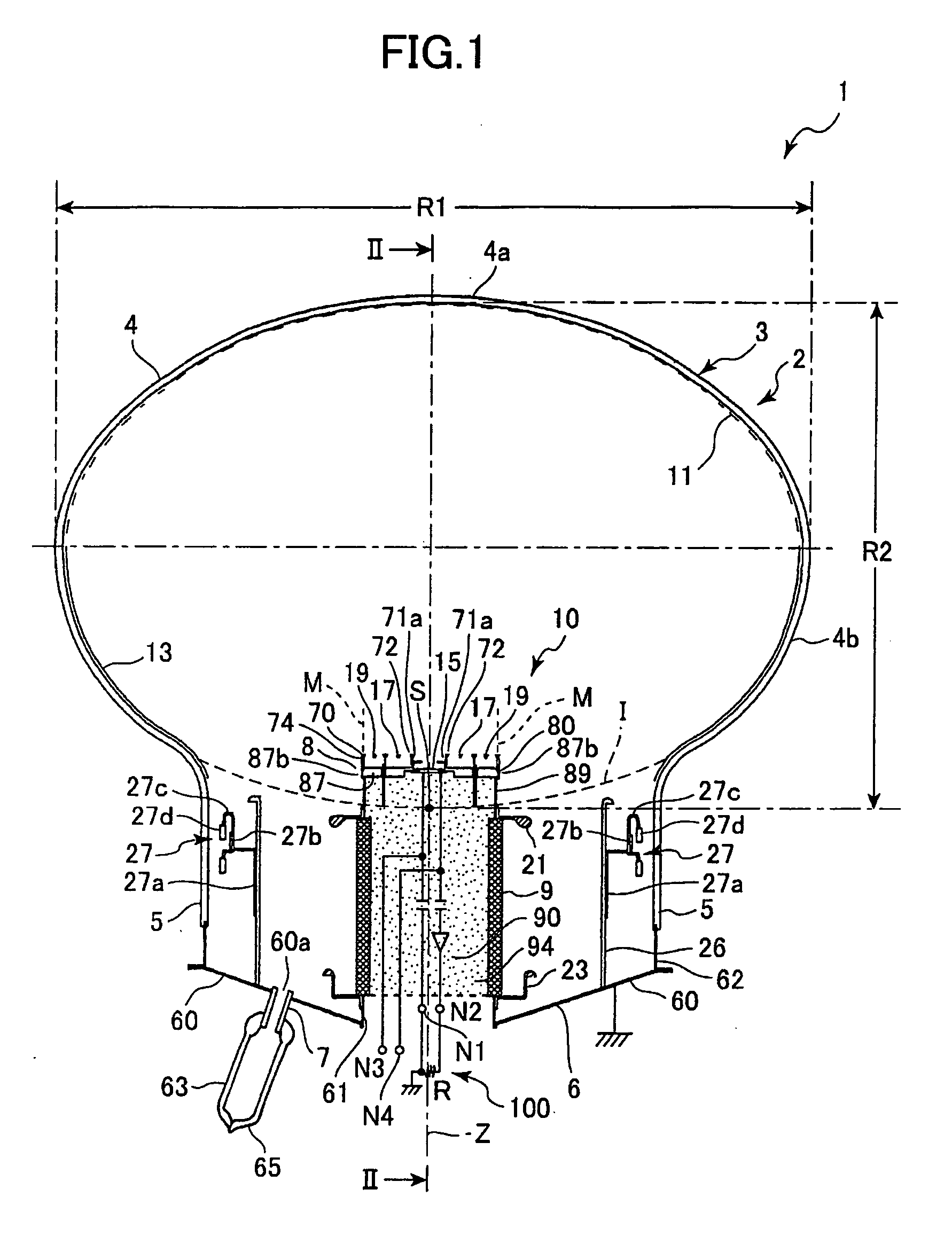Electron beam detection device and electron tube
- Summary
- Abstract
- Description
- Claims
- Application Information
AI Technical Summary
Benefits of technology
Problems solved by technology
Method used
Image
Examples
first modification
[0200] As shown in FIG. 13, the vertical cross-section of the glass bulb body 4 including the axis Z may be substantially a circular shape. In this case, the diameter of the glass bulb body 4 perpendicular to the axis Z is substantially equal to the diameter thereof parallel to the axis Z.
[0201] Also in this case, the APD 15 may be disposed on the glass bulb body 4 side (upper side in FIG. 13) relative to the reference point S at which the imaginary extended curved surface I of the lower hemisphere 4b of the glass bulb body 4 crosses the axis Z in the glass bulb base 5. The point c denotes the center of the glass bulb body 4.
[0202] Equipotential surfaces E are generated by a potential difference between the envelope 2 and the APD 15 and, accordingly, the electrons from the photocathode 11 fly along the trajectories L. Therefore, the electrons are converged on a point P3 in the vicinity of the upper surface of the APD 15, which is located slightly below the point C.
[0203] By dispo...
second modification
[0205] In the above embodiment, the leading end 21c of the conductive flange 21 has a rounded shape having a greater thickness than that of the flange body 21b. Alternatively, however, the configuration of the leading end 21c of the conductive flange 21 may be obtained by rolling up the outer periphery of the flange body 21b, as shown in FIG. 15.
[0206] Similarly, the configuration of the leading end 23d of the conductive flange 23 may be obtained by rolling up the outer periphery 23d of the rising portion 23c.
third modification
[0207] As described with reference to FIG. 3, in the above embodiment, the cap 73 of the shield portion 70 has the inner wall 72, ceiling 76, and outer wall 74. Alternatively, however, the inner wall 72 and ceiling 76 may be removed from the cap 73, as shown in FIG. 16. In this case, the cap 73 is constituted by only the outer wall 74.
[0208] Also in this case, the manganese beads 17 and antimony beads 19 are disposed at the portions on the upper side (i.e., the upper hemisphere 4a side) relative to the base 87 and between outer wall 71a of the cover 71 and imaginary extended curved surface M of the outer periphery 87b of the base 87, as in the above embodiment which has been described with reference to FIG. 1. Therefore, the base 87 and outer wall 74 prevents the manganese vapor or antimony vapor from being adhered to the internal surface of the glass bulb base 5, the outer stem 6, or lower hemisphere 4b. Further, the cover 71 prevents the manganese vapor or antimony vapor from bei...
PUM
 Login to View More
Login to View More Abstract
Description
Claims
Application Information
 Login to View More
Login to View More - R&D
- Intellectual Property
- Life Sciences
- Materials
- Tech Scout
- Unparalleled Data Quality
- Higher Quality Content
- 60% Fewer Hallucinations
Browse by: Latest US Patents, China's latest patents, Technical Efficacy Thesaurus, Application Domain, Technology Topic, Popular Technical Reports.
© 2025 PatSnap. All rights reserved.Legal|Privacy policy|Modern Slavery Act Transparency Statement|Sitemap|About US| Contact US: help@patsnap.com



